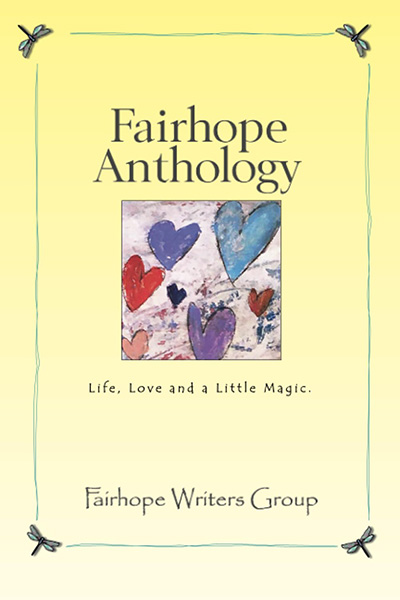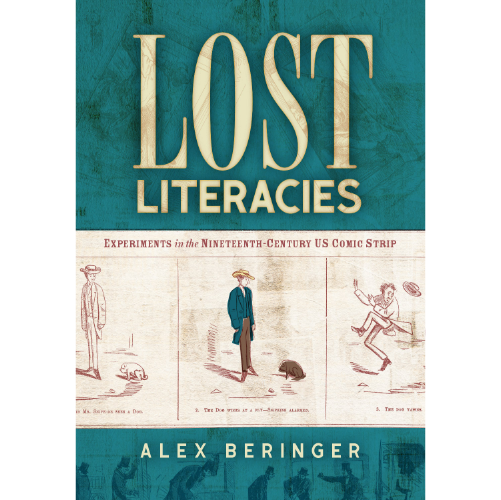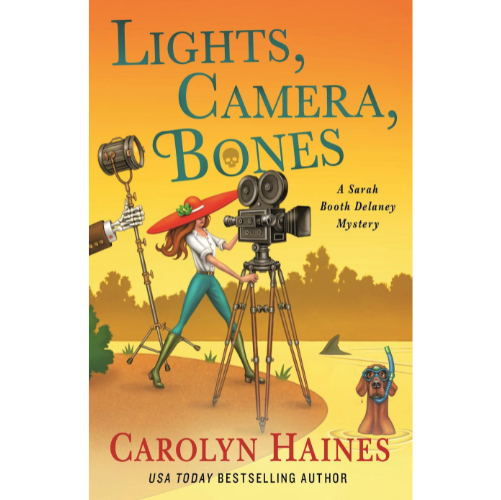Fairhope Anthology: Life, Love and a Little Magic
By The Fairhope Writers Group
Serendipity Press, 2023
Paperback: $16.99
Genre: Short Stories, Poems, Essays
Reviewed by Edward Journey

Reading Fairhope Anthology: Life, Love and a Little Magic, the newest book from the Fairhope Writers Group, I could imagine reading these stories on a porch (or a Grand Hotel balcony) with a beverage close at hand and a gentle bay breeze blowing. The charming collection celebrates what draws people to the book’s eponymous town on the eastern shore of Mobile Bay. Once known as “home of the forward thinkers,” Fairhope is often described as having “more writers than readers.”
The eight writers whose work is collected here in twenty-six selections represent an assortment of backgrounds and writing experience, but all narrative roads lead to Fairhope, founded in 1894 as a utopian single-tax colony. These are honest stories, told from the heart with a love for sharing and a passion for Fairhope. People in these stories tend to meet at Page and Palette bookstore, buy their groceries at Greer’s, and take pleasant walks along the bay. In stories set in an earlier Fairhope, the children are sent to Marietta Johnson’s progressive School of Organic Education and people congregate at the Colonial Inn. Such references are a welcome touchstone for those readers fortunate enough to know the real Fairhope.
Notably, the one time Fairhope does not appear in a story is in a selection called “Plain Jane,” by Phyllis Pittman. In it, Jane, a restless woman in Atmore, Alabama, transforms herself physically and flees a stagnant marriage to become “Marianna Mancini.” Jane heads west, but since the story is a portion of Pittman’s upcoming novel, Becoming Marianna, I’d wager she eventually finds her way to Fairhope.
Tyrannical marriages pop up in Pittman’s other story, “James Winchell Hendrick’s Tiny Cockerel,” in which Mr. Hendrick and his cockerel meet their match in a woman named Annalise. In Rosanne Gulisano’s “Reinventing,” Megan takes a break in Fairhope from her failing marriage to Brad – who keeps showing up at her door. Gulisano’s “Broke Down by the Side of the Road” finds Jody, driving to Fairhope with her baby in search of opportunities, having to call for assistance from her baby’s elusive and shiftless father. In “Fault Line,” by Linda Foster, Tommie resolves to rescue her mother from her abusive, argumentative father. In Foster’s “Application,” Janelle eventually sees her long-term relationship with Dexter for what it really is.
“A Circus Lady” by Ron Meszaros provides a compact, madcap story of a fervent “non-jubilee” initiated by the local misunderstanding of a Romanian word shouted by a circus sideshow’s tattooed fat lady. Meszaros’s “The Handsome Man without a Mustache” provides insights into a Fairhope church tradition of the “welcome Samaritan dinner” as a handsome stranger arrives in town, visits local churches, is hosted for eighty Samaritan dinners over a course of three months, and disappears. Meszaros seems to have a penchant for characters who arrive in town, make an impact, and “just float away and disappear riding an invisible breeze” as demonstrated in two of his other intriguing stories, “The New Girl” and “Rebecca Jelly.” To read in “The New Girl” that a character enrolls in “law school at Auburn” might give pause since Auburn has never had a law school, but after that glitch, the story moves smoothly along.
At a count of eight, Ron Meszaros has the most stories in Fairhope Anthology, demonstrating his authorial range. His story “Delmore’s Decision” explores a determined man taking things into his own hands when dealing with a broken Fairhope sidewalk while “Cotter Pin” follows Nevin Wintersbee’s endlessly positive attitude as he weathers the misadventures of owning his dream car. In “Concoction,” Meszaros explores the dubious tale of how Fairhope might have become mosquito-free, and “Something in the Water” finds two astute senior citizens lamenting the slowly evolving “clinical and authentic insanity” of Fairhope women as evidenced by their fashion choices; naturally, Lady Gaga is to blame.
As a salute to Jule Moon, a founding member of Fairhope Writers Group, Fairhope Anthology was released on her 104th birthday. Moon’s winsome skills are represented by “An Open Letter to the Cats of Fairhope” by Laddie Moon, a Fairhope dog, and four sweet evocative poems. My favorites of Moon’s poems are “I Miss the Days When Men Wore Hats” and “My House in Fairhope.”
The “little magic” promised in the anthology’s subtitle is to be found in some of the early stories such as “The Key,” by Ken James, in which a mysterious found key opens some Fairhope magic for a man going through a rough time, and “The Witches of Fairhope,” by Joe Raia, in which an actual “Faery Witch” and wiccan join a local Witches Bike Ride, combing the streets of Fairhope for lost powers. Ken James’s “The Clever Little Flushing Handle: A Fairy Tale” examines how far a “smart” toilet might go to serve its client. A different kind of magic occurs in Joe Raia’s “Golden Girl,” narrated by a “new kid on the block” who experiences the discomfort that comes with being a new kid as sweet surprises gradually unfold. In Raia’s “Labor Day Weekend 1928,” Molly, a strong-willed 18-year-old graduate from the Organic School with a concern for social justice, meets her ideological match in a young worker for Al Smith’s presidential campaign.
Love, loss, and the healing power of time are explored in “Edward the Second” by Linda Foster and “Where Forgotten Dreams Belong” by Rosanne Gulisano. In each, a widowed spouse experiences an unexpected awakening.
Youthful road trips figure prominently in Gulisano’s “Road Trip, 1967” and Teen Seiner’s “Pearl.” In Gulisano’s story, set in the Vietnam era, three recent high school graduates with “the dark cloud of the military draft” hanging over them, set out on the grand adventure of a road trip to California. In “Pearl,” set in the 1950s, Sidonie boards a bus for Fairhope to escape an overbearing, permanently pregnant mother and hopefully find mischief with a local “hooligan” named Uly. En route, she meets a Texas musician named Pearl who freely dispenses pot, liquor, and wisdom. Readers may draw their own conclusions about Pearl (and how did Uly’s grandfather die?).
Fairhope Anthology’s finale, and the longest story in the collection, is “Synchronous Climate,” “a fiction piece based on fact” by Teen Seiner. In it, she evokes the time in 1909 when writer Upton Sinclair, his wife Meta, and son David rented a house in Fairhope. The story is told by Dave, Sinclair’s secretary, who, with his wife Maud, joins the Sinclairs on Mobile Bay. This story captures what one imagines the early days of Fairhope to be as Dave celebrates the “synchrony” of the town, beach, and bay. The Sinclairs embody the freethinkers who were drawn to Fairhope and ensuing intrigues keep the story moving. Seiner seems to summarize the spirit of all the Fairhope stories when she writes about Fairhope’s “distinct presence of magic in the air, and her special ability to synchronize that magic with those open enough to receive it.”
Edward Journey, a retired university professor and theatre professional living in Birmingham, regularly shares his essays in the online journal “Professional Southerner” (www.professionalsoutherner.com).
.





